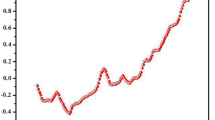Abstract
The emission of volatile organic compounds (VOC) from wood and wood products are important in evaluating the impact on the indoor environment from different materials. The results from analyses of emissions from nine different wood species are presented in this article. The measurements were made with Field and Laboratory Emission Cell (FLEC) and with Head-Space (HS) analyses and the results from the different methods are discussed. The main emissions are terpenes from softwood and acetic acid from hardwood.
Zusammenfassung
Kenntnisse über die Abgabe von flüchtigen organischen Stoffen (VOC) aus Holz und Holzwerkstoffen sind wichtig, wenn die Umweltbeeinflussung von verschiedenen Materialien untersucht werden soll. Messungen an neun verschiedenen Holzarten werden in diesem Artikel präsentiert. Die Messungen wurden mittels Field and Laboratory Emission Cell (FLEC) und Head-Space (HS) Analyse durchgeführt, wobei auch die verschiedenen Methoden beurteilt wurden. Die hauptsächlichen Abgaben an flüchtigen Stoffen sind Terpene aus Nadelholz, sowie Essigsäure aus Laubholz.
Similar content being viewed by others
References
Englund F, Andersson B-I (1994) Emissions of volatile compounds from wood and wood products. A survey of current international research (Swedish). Trätek 9404023
Falk A, Löf A, Hagberg M, Wigaeus-Hjelm E, Wang Z (1991) Human exposure to 3-carene by inhalation: Toxicokinetics, effects on pulmonary function and occurrence of irritative and CNS symtoms. Toxicol. Appl. Pharmacol. 110: 198–205
Fengel D, Wegener G (1989) “Wood, Chemistry, Ultrastructure, Reactions”, Walter de Gruyter
Gustavsson H (1992) Building materials identified as major sources for indoor air pollutants, BFR D10: 1992
Meyer B, Boehme C (1997) Formaldehyde emission from solid wood, Forest Prod. J. 47 (5): 45–48
Roffael E (1989) Abgabe von flüchtigen organischen Säuren aus Holzspänen und Holzspanplatten. Holz Roh-Werkstoffe 47: 447–452
Sundin B, Risholm-Sundman M, Edenholm K (1992) Emission of formaldehyde and other volatile organic compounds from sawdust and lumber, different wood-based panels and other building materials. Proc. 26th Int. Particleboard/Composite Materials Symposium, Pullman
Turner S, Martin C, Hetes R, Northeim C (1996) Sources and factors affecting indoor emissions from engineered wood products. Summary and evaluation of current literature. EPA-600/R-96-067
Wolkooff P (1995) Volatile Organic Compounds — Sources, Measurements, Emissions and the Impact on Indoor Air Quality. Indoor Air, supplement no 3/95
Author information
Authors and Affiliations
Rights and permissions
About this article
Cite this article
Risholm-Sundman, M., Lundgren, M., Vestin, E. et al. Emissions of acetic acid and other volatile organic compounds from different species of solid wood. Holz als Roh-und Werkstoff 56, 125–129 (1998). https://doi.org/10.1007/s001070050282
Issue Date:
DOI: https://doi.org/10.1007/s001070050282




